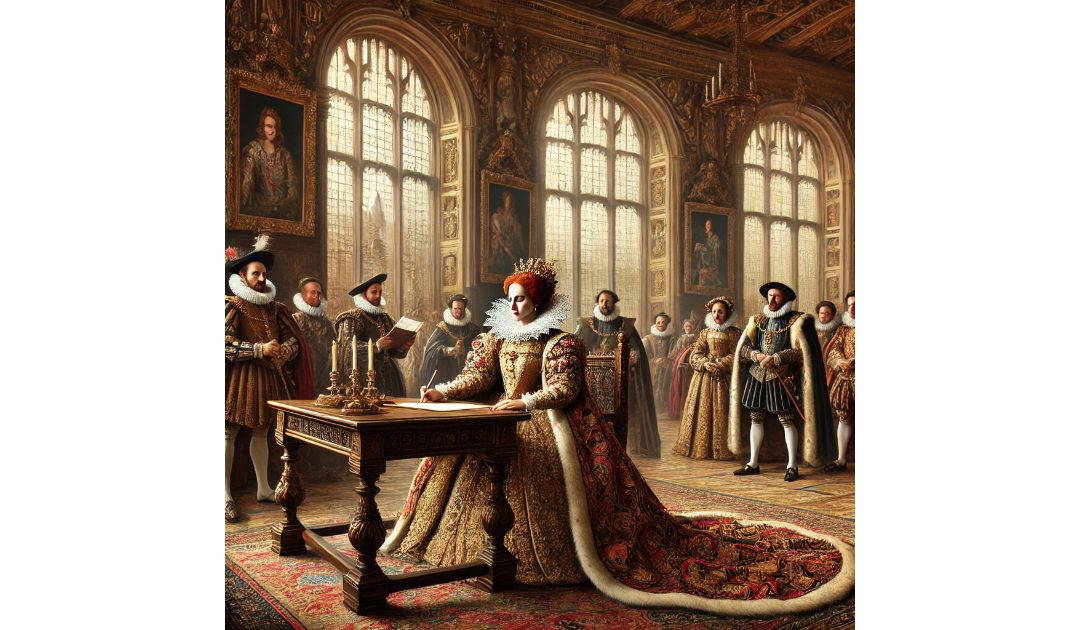On 1st February 1587 Queen Elizabeth I signed the death warrant for her cousin Mary Queen of Scots. Mary, a figure steeped in tragedy and intrigue, was born in December 1542 and became queen when she was just six days old. Her tumultuous life was marked by political upheaval and personal strife, culminating in her long captivity in England. After being forced to abdicate in favor of her son, James VI of Scotland, Mary sought refuge in England, hoping for support from her cousin, Queen Elizabeth I. However, her arrival in England in 1568 marked the beginning of a 19-year imprisonment that would ultimately lead to her execution.
Mary’s presence in England was a source of great anxiety for Elizabeth. As a legitimate heir to the English throne through her grandmother, Mary posed a significant threat to Elizabeth, who faced numerous plots and conspiracies aimed at deposing her. The Catholic Church viewed Elizabeth’s rule as illegitimate, and many Catholics saw Mary as the rightful queen. This political backdrop intensified Elizabeth’s reluctance to take decisive action against Mary, despite the growing pressure from her advisors and the Protestant establishment.
During her captivity, Mary was moved between various castles and estates, including Bolton Castle and Fotheringhay Castle. Her imprisonment was marked by a degree of luxury, but she was also subjected to strict surveillance and isolation. Despite her confinement, Mary remained a figure of hope for Catholic factions in England and Scotland, leading to several plots to rescue her or place her on the throne. The most notable of these was the Babington Plot in 1586, which aimed to assassinate Elizabeth and liberate Mary. The plot was uncovered, and Mary was implicated through intercepted letters, leading to her trial for treason.
Elizabeth faced a moral and political dilemma regarding Mary’s fate. On one hand, executing Mary could eliminate the threat she posed, but on the other hand, it could incite Catholic uprisings and backlash against Elizabeth’s rule. The prospect of executing a fellow queen was particularly troubling for Elizabeth, who understood the implications of such an act. She had long been wary of the consequences of regicide, fearing that it would set a dangerous precedent and tarnish her own legacy.
After much deliberation, Elizabeth eventually signed Mary’s death warrant on the first of February 1587, but she did so with great reluctance. The act was fraught with emotional turmoil; Elizabeth reportedly expressed regret and sorrow over the decision. The warrant was executed on 8th February 1587, at Fotheringhay Castle, where Mary met her end with dignity, famously declaring her innocence and asserting her royal status until the last moment.
Mary’s execution had profound implications for Elizabeth’s reign. It galvanized Catholic opposition and contributed to the ongoing tensions between England and Catholic Europe. Elizabeth’s decision to execute Mary ultimately underscored the complexities of her position as a female monarch in a patriarchal society, where the legitimacy of her rule was constantly questioned. The tragic fate of Mary Queen of Scots remains a poignant reminder of the intricate interplay of power, religion, and gender in the turbulent landscape of 16th-century politics.
My ancestor, the Elizabethan spy Sir Anthony Standen is the only man I know of to have been knighted by both Mary and Elizabeth. I have told his story in The Spy who Sank the Armada.

